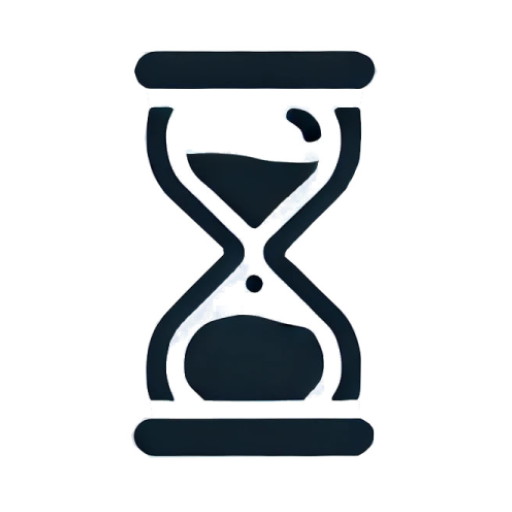What is the 2-Minute Rule?
The 2-Minute Rule, created by David Allen in the book Getting Things Done, is a practical strategy to increase your productivity and manage your time better. In short, if a task takes less than two minutes, you should do it immediately. For example, replying to a quick email or putting away a document. This approach tackles procrastination, which often piles up small tasks, disorganizes your day, and causes overwhelm.
By using the 2-Minute Rule, you identify simple activities that accumulate when postponed. By doing them right away, you clear your to-do list and your mind. As a result, you can focus on larger and more complex projects with greater clarity.
Origin in David Allen’s GTD Method
David Allen developed the 2-Minute Rule as part of the GTD (Getting Things Done) method. He based the system on years of research into time management. GTD aims to control workload and manage tasks effectively, boosting productivity.
How the 2-Minute Rule Works
When adopting the 2-Minute Rule, you identify simple tasks like replying to an email or organizing a document. If postponed, they pile up. By doing them right away, you clear your to-do list and your mind. This allows you to focus on more complex projects.
For example, applying the rule at work helps you deal with tasks quickly. This builds a habit of action and contributes to a smoother workflow. Over time, small wins motivate you to tackle bigger projects.
Therefore, implementing the 2-Minute Rule makes time management easier and improves productivity. It provides a clear way to deal with daily tasks before they become burdensome.
Why the 2-Minute Rule Works
The 2-Minute Rule is a practical approach to managing small tasks. If a task takes two minutes or less, do it right away. This prevents tasks from piling up, which can create disorder and stress.
You’ll notice that almost any task can be simplified into a two-minute version:
- Studying can become reading a questionnaire
- Reading before bed becomes reading a page
- Washing dishes starts with a few utensils
- Folding clothes can be reduced to folding a few pairs at a time
Stress Reduction
Putting off small tasks causes anxiety. Your mind gets stuck on pending tasks, distracting you from what matters. By applying the rule, you clear your to-do list quickly. This creates a lighter, more focused work environment.
Efficiency Boost
Completing simple tasks gives you a sense of accomplishment. This feeling serves as a powerful motivator. It makes the transition to more complex projects easier by reducing resistance to action. Therefore, each small success boosts your overall performance.
Thus, the effectiveness of the 2-Minute Rule lies in managing small tasks. By adopting it, you minimize your workload and prepare for bigger challenges with more confidence.
How to Apply the 2-Minute Rule in Daily Life
Identify Quick Tasks
To use the 2-Minute Rule, start by identifying tasks that take less than two minutes. For example, replying to an email, organizing your desk, or making a quick call. Review your to-do list at the start of the day and mark these activities. This way, you make quick decisions on how to use your time.
Creating a Favorable Environment
Keep your workspace organized and free of distractions. Have paper and a pen on hand to jot down new tasks. Turn off unnecessary notifications on your phone to avoid interruptions.
Integrating the Rule into Your Routine
Use the rule during transitions, such as between tasks or while waiting for a meeting. However, be careful not to accumulate too many quick tasks, as this can create a cycle of procrastination. By acting quickly on small demands, you free up time for bigger projects and feel more accomplished.
Practical Examples of the 2-Minute Rule
The 2-Minute Rule optimizes everyday tasks. For instance, replying to emails: if it takes less than two minutes, reply right away. This avoids the buildup of messages and keeps your inbox organized.
Another example is organizing items. If putting away a pen or a dirty cup takes less than two minutes, do it immediately. This keeps your space tidy and saves time.
Additionally, make quick calls, like confirming an appointment. Instead of postponing, use the rule to complete these interactions promptly. This frees up mental space and reinforces the habit of action.
These examples show how the 2-Minute Rule turns small tasks into quick steps. By implementing it, you increase productivity and organization in your routine.
Integration with Other Routines
To maximize the 2-Minute Rule, combine it with other productivity techniques. For example, use it with the Pomodoro Technique: at the end of each 25-minute cycle, handle two-minute tasks before the break. This keeps your list organized and prevents task accumulation.
Another option is integrating it with Kanban. In a task board, identify tasks that take less than two minutes and complete them quickly. This frees up space for more complex tasks.
Create a “Quick” category for two-minute tasks and prioritize them. This way, you don’t neglect small commitments.
In summary, combining the 2-Minute Rule with other practices creates a more balanced, less stressful work environment.
Immediate Benefits of the 2-Minute Rule
Applying the 2-Minute Rule brings practical benefits. First, it reduces stress. By completing quick tasks right away, you avoid mental overload and feel relief. This allows you to focus on more complex activities with clarity.
Furthermore, the technique improves your sense of control over your schedule. Completing small tasks quickly makes your to-do list less intimidating. This creates a positive cycle of productivity and motivation.
Efficiency gains are also noticeable. By freeing up time with quick tasks, you have more space for important projects. The small wins boost your self-esteem and confidence, which are essential for a healthy work environment.
Therefore, the 2-Minute Rule isn’t just about time management. It optimizes your well-being and daily satisfaction.
Conclusion
The 2-Minute Rule is a simple tool to transform your routine. If a task takes less than two minutes, do it now. This prevents procrastination, reduces pending tasks, and promotes practical organization.
To get started today, we offer a downloadable list of quick tasks. It includes examples aligned with the 2-Minute Rule, helping you take small actions with ease. Adopt this technique and see your productivity and time management improve. Don’t miss the chance to simplify your life!


